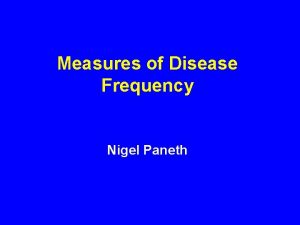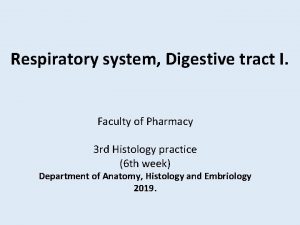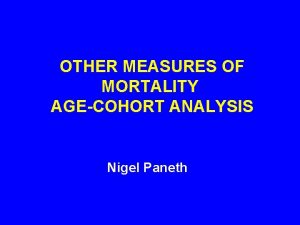SUSSERS CAUSAL CRITERIA Nigel Paneth CAUSAL CRITERIA COMPARED









- Slides: 9

SUSSER’S CAUSAL CRITERIA Nigel Paneth

CAUSAL CRITERIA COMPARED SURGEON GENERAL SUSSER ASSOCIATION BRADFORD-HILL DIRECTION DOSE RESPONSE* EXPERIMENT TIME ORDER STRENGTH TIME ORDER** STRENGTH CONSISTENCY SPECIFICITY COHERENCE PREDICTIVE PERFORMANCE COHERENCE*** *Included under strength in other criteria. ** Temporality in Bradford-Hill. *** Biological plausibility in Bradford-Hill

2. This means we must first make sure the study or studies we examine are sound, i. e. unbiased. It makes no sense to apply causal criteria to studies which are badly flawed. Causal criteria try to address the possibility of confounding more than they do bias. They assume that the data are in fact correct, i. e. unbiased. 3. At the level of the individual study, consistency does not usually apply. 4. Best use of causal criteria is to assess groups of studies. Meta-analysis usually summarizes odds ratios, thus assessing strength, and also formally excludes problematic (i. e. potentially biased) studies.

CAUSAL CRITERIA AS PER M W SUSSER (Am J Epid 1991; 133: 635 -648) Three absolute requirements: Association. The exposure and outcome are associated more commonly than would be expected by chance. Time order. The exposure can be shown to precede the outcome Direction. A change in the outcome is a consequence of change in exposure. (Not the same as directionality in a study).

To best determine whether the above criteria are met, we then look at five additional criteria, defined slightly differently by Susser 1. 2. 3. 4. 5. Strength (same meaning in Susser) Specificity Consistency Predictive performance Coherence

2. SPECIFICITY When we ask if relationships are specific, we can mean either a. Specificity of effect b. Specificity of cause

3. CONSISTENCY Susser defines consistency as "persistence of the association upon repeated testing" How is this persistence asssessed? a. survivability The association persists even with the most rigorous study designs and analysis b. reliability The association persists in many diverse study settings

4. PREDICTIVE PERFORMANCE The association observed can predict a previously unknown observation

5. COHERENCE a. theoretical Compatible with pre-existing theory b. factual Compatible with pre-existing knowledge 1. biologic Compatible with current biological knowledge from other species or other levels of organization (e. g. cellular in humans) 2. statistical Compatible with a reasonable statistical model of the relationship of cause to effect (e. g. dose-response)
















